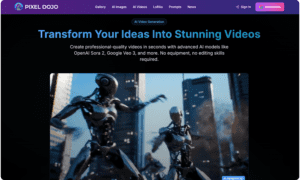An agentic browser is a web browser enhanced with artificial intelligence that can operate on its own, making decisions and taking actions to complete tasks online. Although they accelerate workflows, they also pose very serious security threats. These browsers may run within organizational environments, and misuse may expose users to serious risks. Effective security involves effective governance, robust technical controls, and informed users.
This post covers the risks and practical steps to secure agentic browsers. These tools are powerful, but their autonomy can turn a mistake into a major security issue. Knowing the risks upfront helps organizations adopt them with confidence.
Key Risks of Using Agentic Browsers
Agentic browsers merge browsing, AI assistance, and autonomous execution into one environment. They hold the same privileges as the user and can act across multiple logged-in sessions. This increases convenience but expands the attack surface in ways that traditional browsers do not.
Prompt Injection
Prompt injection remains one of the most immediate security concerns. Malicious instructions can hide in webpage elements. They might be in HTML comments or white text on a white background. If the agent processes these cues, it may perform actions that the user never intended. Attack outcomes may involve:
- Carrying out unauthorized transactions.
- Visiting harmful websites.
- Sharing sensitive information.
Because these triggers may be invisible to human users, detection becomes more difficult.
Data Exposure and Leakage
Agentic systems might retrieve or send data between domains. This can go against organizational rules. Sensitive information can leak during tasks that involve summarizing, searching, or drafting content. Older DLP tools were not built for AI-driven actions and may miss these transfers. This gap creates opportunities for accidental disclosure that bypasses established controls.
Lack of Human Oversight
These agents operate at machine speed. They can complete sequences of actions that would normally require human review and verification. Without proper guardrails, a single flawed instruction or compromised prompt could escalate quickly. Lacking real-time checkpoints raises the risk of user mistakes and targeted attacks.
Tool/API Misuse
Agentic browsers often connect with email, calendars, storage systems, and other tools. If an AI agent with wide permissions is hacked, the attacker can misuse these connections. For example, they might send unauthorized messages or alter schedules. Access to these systems increases the impact of even small failures.
Foundational Security Principles for Agentic Browsers
Organizations need a solid foundation before implementing technical controls. These principles help ensure that agent capabilities remain bounded and predictable.
A Zero Trust Mindset
Zero Trust presumes that no user, device, or process should be trusted. In the context of agentic browsers, AI-driven behavior is risky in nature. Users and administrators should expect the agent to misinterpret instructions. They should also expect it to interact with unintended content. By assuming potential failure, security teams can better shape defensive measures.
Applying the Least Privilege Principle
One of the best security controls is the restriction of permissions. Agents must have access to resources only to perform certain tasks. Privilege reduction minimizes the channels that an attacker may exploit. Least privilege reduces the impact of errors. The reason is that the agent cannot operate beyond its assigned permissions.
Include Human Oversight
Before high-risk activities are executed, they need explicit human approval. The human-in-the-loop strategy avoids risky and impulsive behavior. It stops the system from making harmful or permanent decisions. Good use and user awareness are also supported by good oversight.
Organizational and Technical Security Solutions
Security programs should be extended to accommodate autonomous behaviors. The controls must cover data movement and system interactions.
Data Protection Strategies
Data protection policies should extend to prompt content. Sensitive data needs specific DLP rules that detect and limit exposure. Guardrails must control how information moves through agents. They should also define what data agents can use to complete tasks.
Training should also help employees avoid entering unnecessary sensitive details into prompts. One of the most common AI security problems is prompt injection. This supports the importance of strict data handling.
Isolation and Sandboxing
Running agentic browsers in isolated environments reduces the scope of potential damage. Options include separate browser profiles, dedicated operating system accounts, or virtual machines.
Isolation restricts lateral movement if a compromise occurs and helps contain unauthorized actions. This method lets teams test agentic behaviors while keeping core business systems safe.
Threat Monitoring and Mitigation
The controls implemented to counter threats should be AI-specific. Guardrails can detect unusual patterns that suggest prompt injection or unauthorized output. Security teams can track behavioral deviations and unexpected sequences of actions.
A SIEM platform helps centralize logs and highlight anomalies across systems. Constant visibility allows detection and mitigation of threats in time.
Identity and Access Management
IAM frameworks must extend to agent-run processes. Enforcing SSO centralizes authentication and ensures consistent policies. MFA reduces unauthorized access, especially when agents interact with sensitive systems. Ephemeral credentials help limit exposure. They reduce the window during which a compromised token remains useful. Short-lived sessions also support auditability and controlled privilege escalation.
Policy and User-Based Agentic Browser Risk Controls
Technology alone cannot manage all risks. Organizational policies and user training are essential for safe deployment.
Phased Deployment via Pilot Programs
Organizations should introduce agentic browsers in stages. Pilot groups can test the technology in controlled settings. These pilots should avoid access to sensitive systems. Results from these pilots support better configuration decisions and identify workflow challenges. Gradual adoption ensures that teams understand agentic behaviors before deploying them widely.
Establishing Clear Use Policies
Adoption must be guided by well-defined rules. Acceptable use policies should define when to use agentic features and what data to share. Teams need clarity on prohibited actions and required approval steps. These guidelines help prevent unsafe practices. They also maintain consistent expectations across the organization.
Training Users
Employee awareness remains critical. Users need to know risks such as indirect prompt injection and agent misinterpretation of site content. Training should provide practical tips for writing safer prompts. It should also include steps to verify actions before confirming them. Users should also know how to halt an agent that begins taking unexpected steps.
Regular Updates
You should set agentic browsers to automatically apply patches. The threat landscapes evolve rapidly, and the updates usually contain security fixes. Regular patching seals any vulnerabilities before exploitation by attackers.
Conclusion
Agentic browsers improve workflows but bring new threats you need to control. Your organization should use a multi-layered security strategy to protect data. It must blend good governance, technical controls, and user awareness. The risk of misuse is minimized with a combination of these aspects.
Frameworks like the OWASP Top 10 for LLM Applications provide useful guidance. They help you assess vulnerabilities and develop effective countermeasures. By following these practices, organizations can benefit from the use of agentic browsers. They can also protect their environments and maintain trust in AI operations.



































